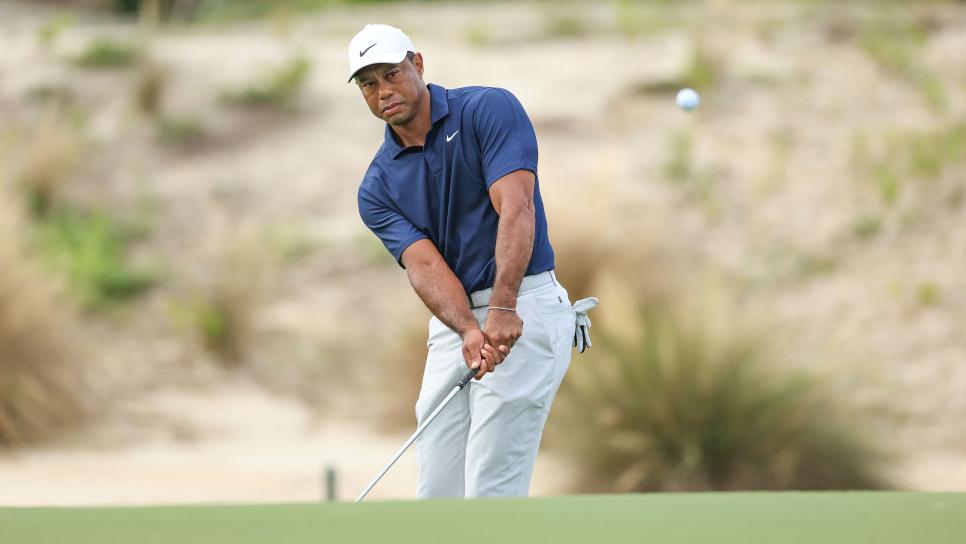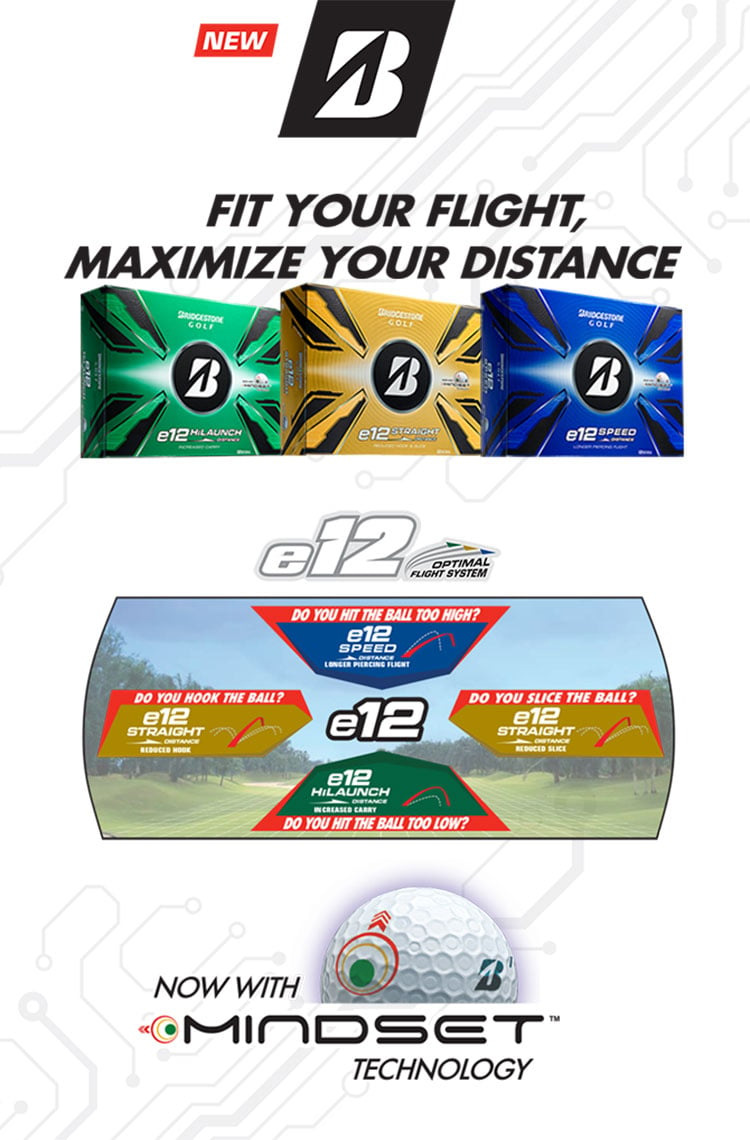As he makes his 2024 season debut at this week’s Genesis Invitational (his first official PGA Tour start since ankle surgery last April), all things Tiger Woods will be the primary topic of discussion. That includes his equipment, which will include his first go in competition with Bridgestone’s latest version of its Tour B X golf ball.
Golf Digest equipment editor E. Michael Johnson had the opportunity to ask Woods about his ball-testing process, how he mimics tournament conditions when practising at his home in Florida and where amateurs are missing the mark with their ball choice. Here’s what Woods had to say.
We’ve discussed your golf-ball preferences in the past and you’ve said you pretty much want all the spin you can get and it’s your job to take it off. The Tour B X, however, is not the ‘spinniest’ ball in the Bridgestone line. What’s changed or what trait does the X give you that the XS did not?
It’s important to get fit for a golf ball and to continue to check your fit as your situation changes. In the past, I wasn’t as concerned with [driver] distance as I was with short-game spin. But these days, I want some extra pop off the tee, and the X provides eight to 10 more yards at times. The new Tour B X also spins quite a bit more on short shots than past models.
You’ve spoken in the past about how important it is to you that the ball be in a very specific window when you look up from a shot. Does the X fit that window or have you had to adapt to what you like to see?
When we talk about this, what we are talking about is a consistent ball flight and a trajectory that accomplishes the style of play I want to use. With the Tour B X, the launch is a touch lower, however with the higher ball speed the overall change of the apex of the shot or window is very negligible, which is nice because this was a contributing factor to a easy transition.
With a shorter golf ball likely, the golf industry is worried about its long game
What is the level of importance in your process for evaluating a ball: driving, iron play, shot-making, short game, putting?
When going through the ball-fitting and transition to the Tour B X, the ball speed and driver performance are what initially got my attention. Then it was time to put the ball through the paces with the other clubs. What Bridgestone has done, coupling distance off the tee with greenside control, is really remarkable. I find that we aren’t sacrificing one area for the other as much as we used to.
Do you miss the ball you played in the mid-1990s? If so, why, and have you gone back and tried any old balls?
It’s such an interesting conversation, and yes, the equipment has changed but so much else has also. You look at athleticism, player conditioning, course setup and equipment advances, it’s such a different game now than when I was coming up. More forgiving equipment options have become available over the years, but depending on how you want to set up your bag, shot-making and workability are still a big part of the equation. I have all of my old gear and will occasionally mess around with it at the house for nostalgia, but what you see me putting in play any given week is what I know is the best setup for my game at that moment.
What’s your process for testing golf balls and how much involves a launch monitor versus what you see/feel and how has that changed over time, if at all?
Before launch monitors it was all about feel and using your eyes to gauge how the ball was performing. Now, I use my Full Swing launch monitor for dialling in distances and getting an accurate picture of how a ball performs on longer shots. For approach shots and shots around the green, it’s still much more about feel and using your eyes than a launch monitor. What works out great for my testing is while I am personally relying on feel and my historical preferences, Bridgestone is there getting data to benchmark and double-check what I am seeing.

Once I’ve completed my range work the final check is to see how the ball performs on course, particularly on scoring shots and around the greens. It can be tough to mimic tournament conditions at home but that’s what we have done in Jupiter. We have a nice group that we can play with to get the adrenalin flowing to really see how new gear is working when put through a real stress test. Once we get the reps in at home and know the ball not only performs but performs consistently then I know it’s ready for tournament play.
Your launch angle has changed over the years – you launch it higher now. Does that affect what you’re looking for in a ball off the tee?
We’re all trying to get the ball in the air with low spin to maximise distance, and the Tour B X is designed to work exceptionally well with that type of launch. It’s a different game than when I was coming up and the balls are different. We used to launch it low because the spin of those balata balls would cause them to climb so much. What Bridgestone has done with the dimples and manufacturing has allowed us to design a ball that has a great trajectory but also doesn’t balloon or get away from us, especially in the wind.
Have you tried the Mindset version of the Tour B X? If so, what are your thoughts?
Mindset is a really interesting marking and concept for all players. It’s a technique that Jason Day has found success with, but for me I think the bigger lesson is all players can benefit from a more purposeful approach to executing shots on the course. The best players in the world all have solid pre-shot routines since it’s almost impossible to compete under pressure without one. Amateurs almost never have a good pre-shot routine, so Mindset will help them quite a bit, if they use it consistently by clearing thoughts and distractions and letting the inner athlete make the swing.
You’ve played in countless pro-ams. What’s the biggest mistake everyday players make in their ball choice?
Amateurs tend to think they’re better than they are, swing faster than they do and assume they hit it longer than is realistic. With clubs they use too little loft, shafts that are too stiff and are less forgiving than they need. When it comes to the golf ball, they don’t take fitting seriously and often just pick the model their favourite player likes. They would be better off with a more forgiving golf ball with a softer compression that fits their swing speed. Forgiveness is your friend, use it to your advantage.

